FY2023 Annual Report
Integrative Cmmunity Ecology Unit
Assistant Professor David Armitage
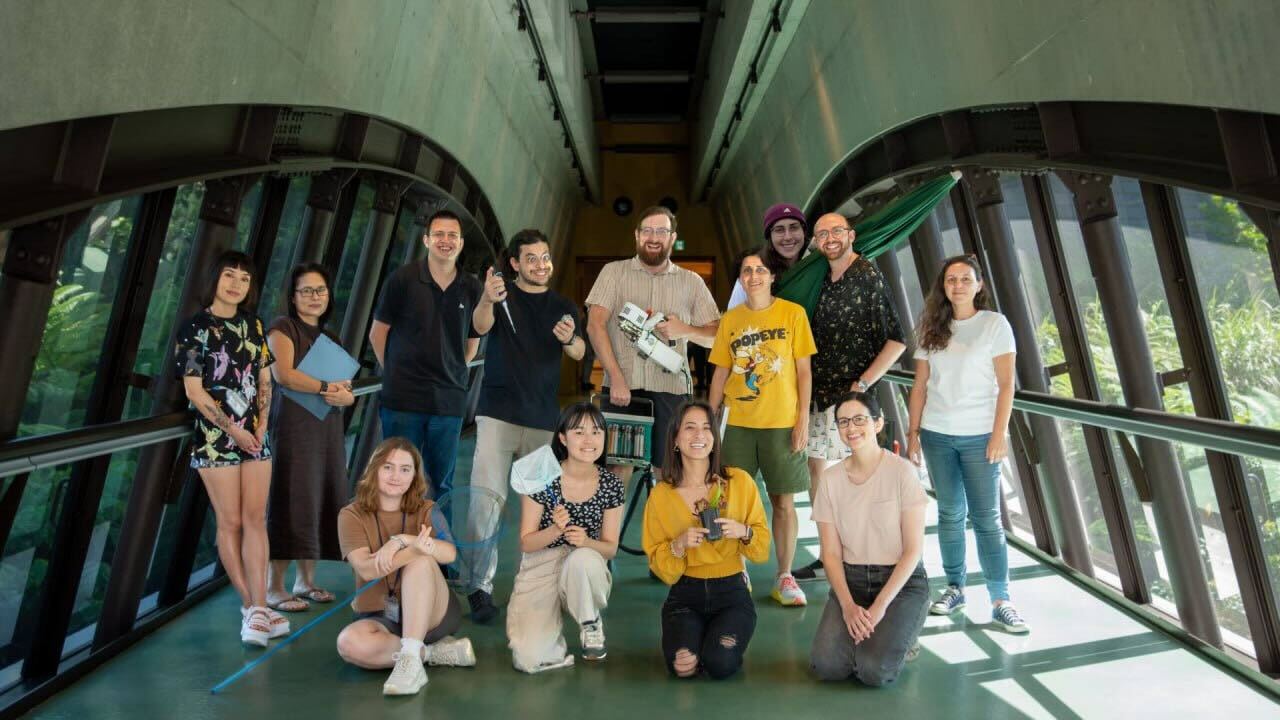
Abstract
Most of our planet's ecosystems are currently impacted by habitat loss, emerging pathogens, globalization, and climate change. The results of these stressors can re-shuffle the species interactions upon which biodiversity and human wellbeing rely. Our unit merges theory, genetics, and chemistry to understand how species interactions vary over space and time and to affect ecosystem structure and functioning.
1. Staff
- Dr. David Armitage (PI)
- Nonno Hasegawa (graduate student)
- Rahel Collyer-Hoar (graduate student)
- Dr. Matin Miryeganeh (staff scientist)
- Dr. Su'ad Yoon (postdoctoral fellow)
- Dr. Samuel Ross (postdoctoral researcher)
- Amy Morrell (intern and rotation student)
- Peter Reynolds (rotation student)
- Helene Bee (intern)
- Chii Kojima (intern)
- Rika Musiienko (intern)
- Alexandro Alonso Sánchez (unit technician)
- Katharine Saunders (unit technician)
- Shizuka Kuda (research unit administrator)
2. Collaborations
2.1 Rapid disruption of plant-pollinator matching under climate warming
- Type of collaboration: Joint research
- Researchers:
- Dr. Tingfa Dong, China West Normal University
2.2 Intra-annual population divergence in heat tolerance in a pest insect
- Type of collaboration: Joint research
- Researchers:
- Dr. Liang Zhu, Institute of Plant Protection, Chinese Academy of Agricultural Sciences
2.3 Holobiont engineering for drought tolerance in soybeans
- Type of collaboration: Joint research
- Researchers:
- Dr. Itumeleng Moroenyane, Stellenbosch University (S. Africa)
- Dr. Ashwil Klein, University of the Western Cape (S. Africa)
- Dr. Stephen Wanjiru, Catholic University of East Africa (Kenya)
2.4 Incorporating pitcher plants into the plant leaf economic spectrum
- Type of collaboration: Joint research
- Researchers:
- Dr. Kadeem Gilbert, Michigan State University
- Dr. Ulrike Bauer, University of Exeter
- Dr. Kenji Fukushima, National Institute of Genetics Japan
- Dr. Rachel Love, Kalamazoo College
- Dr. Qianshi Lin, Penn State University
- Dr. Sukuan Liu, University of Colorado Boulder
- Dr. Sylvie Martin-Eberhardt, Michigan State University
- Dr. Jonathan Millett, Loughborough University
- Dr. Tanya Renner, Penn State University
- Dr. Mathias Scharmann, University of Potsdam
- Dr. Chris Thorogood, University of Oxford
2.5 Ranking dynamics theory for ecological communities
- Type of collaboration: Joint research
- Researchers:
- Dr. Simon Hart, University of Queensland
- Dr. Masato Yamamichi, National Institute of Genetics Japan
2.6 Existence of and solutions to a theory crisis in ecology and evolution
- Type of collaboration: Joint research
- Researchers:
- Dr. Shinichi Nakagawa (OIST TSVP and University of New South Wales)
- Dr. Tom Froese, Embodied Cognitive Science Unit @ OIST
2.7 Checklist for best-practices in empirical coexistence research
- Type of collaboration: Joint research
- Researchers:
- Dr. Chris Terry (University of Oxford)
3. Activities and Findings
3.1 Causes and consequences of phytochemical variation
This project, funded through a combination of JSPS Early-Career Kakenhi, JSPS Postdoctoral Fellowships, and a JGI CSP award, seeks to understand how variation in plant secondary chemistry affects interactions at other trophic levels. We are focusing on the plant genus Crotalaria, which fixes nitrogen from the atmosphere with the aid of the symbiotic root-nodulating bacteria, Bradyrhizobium. The plant also produces copious concentrations of pyrrolizidine alkaloid chemicals, which are highly toxic to many would-be herbivores. We are investigating how variation in the symbiotic microbial partnership influences alkaloid production by the host plant, and how this variation in alkaloid concentrations influence the communities of herbivores, decomposers, and predators that associate with the plant.
A second ongoing project concerns the phytochemical characterisation of all major plant species in Okinawa. We use a combination of NMR, liquid chromatography-mass spectrometry, and elemental analysis to generate phytochemical "fingerprints" for each plant species. We then use these to investigate how the chemistry of plant communities varies over the landscape. For example, between agricultural land, urban green spaces, and surrounding natural forest.
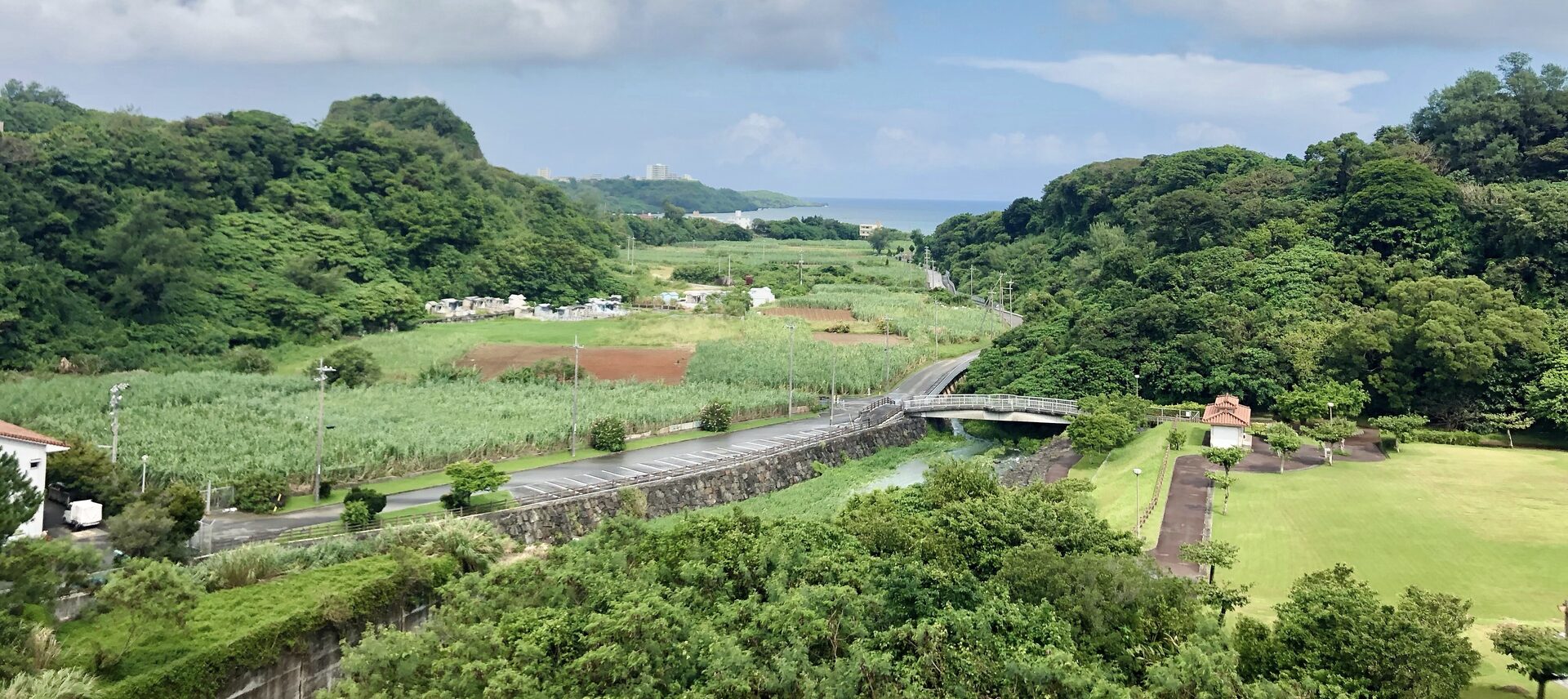
3.2 Spatial population genetics of interacting species
Plant-animal interactions are often asymmetric. That is, one partner (usually the animal) relies completely on the plant for food or shelter, while the plant does not require, or is harmed by, the actions of the animal. In cases like these, the evolutionary maintenance of this association requires that animal partners be able to successfully locate and migrage between populations of the host plants. When host plants are rare, however, this task is particularly challenging. Our goal is to use the tools of landscape genetics to identify how barriers to gene flow between populations manifest for the various symbiotic partners. Do the plant and its obligate symbionts show concordant patterns of gene flow, or are they different based on each species' particular dispersal traits? Further, does the genetic connectivity of these animals' populations decline near their host's range margin, leaving these populations less able to acclimate or adapt to environmental change? To empirically test these questions, we use the carnivorous pitcher plant Darlingtonia califorica and the midge and mite species that are found inside of its pitcher leaves to map and compare gene flow networks of interacting species across the landscapes of California and Oregon in the United States.
During summer 2022, we exhaustively collected genetic samples from pitcher plants and their symbionts from every known population within their range. We have obatined preliminary results from this survey and results should be written up during FY2024.

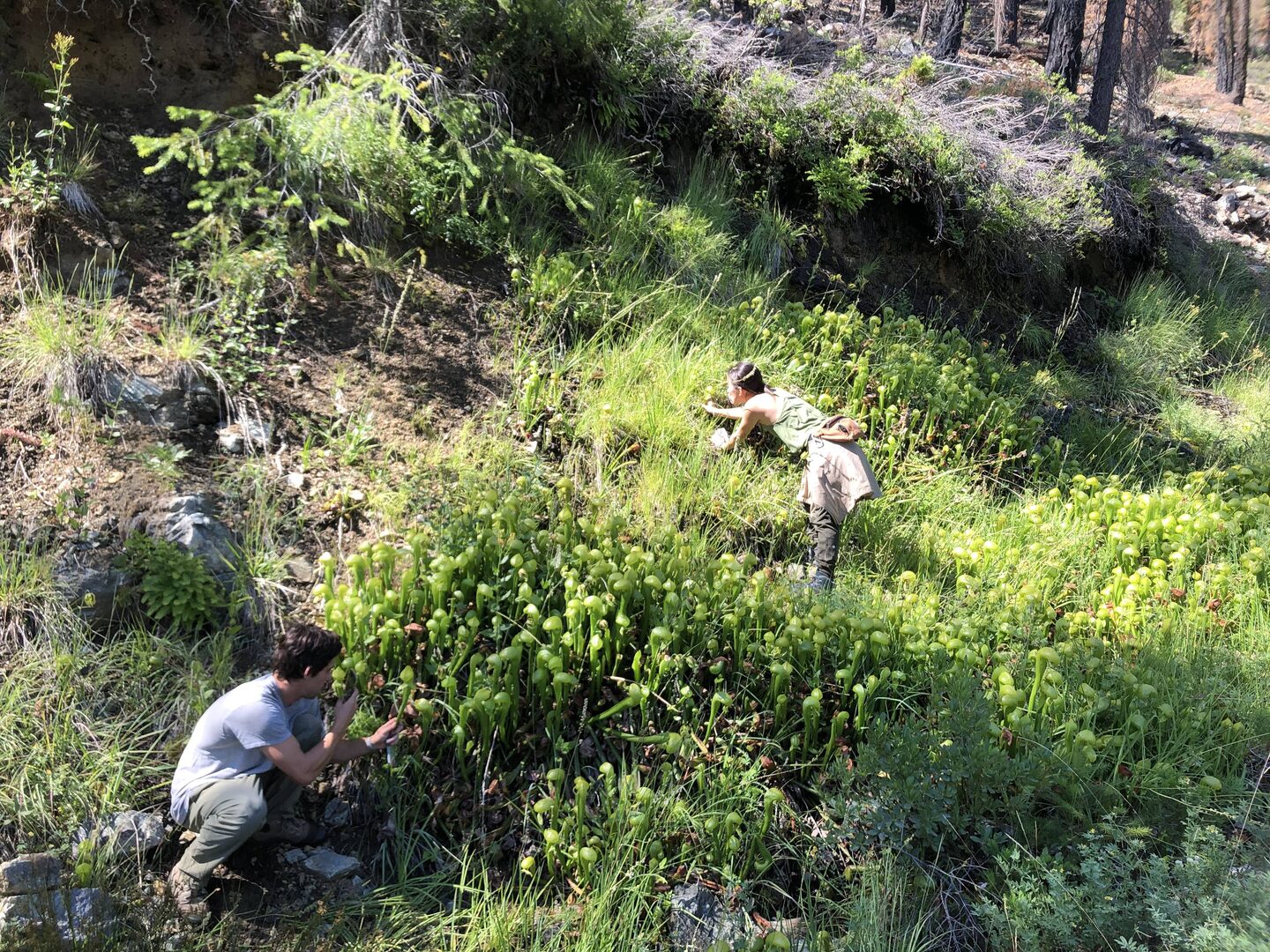
3.3 Bat evolutionary ecoimmunology
The immune systems of bats are unique among mammals in their ability to prevent inflammation arising from infection with pathogens. This may be one reason why bats can serve as asymptomatic reservoirs for many diseases that eventually jump to humans, including hemorragic fevers and coronaviruses. Led by our resident immunologist, we have developed a molecular method to capture and sequence the 'immunome' — or the set of all immune genes — across all major bat groups. Current efforts are dedicated to obtaining high-quality DNA from museum-preserved bat tissue specimens to investigate questions pertaining to the effects of geography (e.g., latitude) and life history traits (e.g., group living, migration, etc.) on the evolution the bat immune system.
3.4 Response diversity as a predictor of ecosystem stability
Response diversity can be understood as the range of responses exhibited by members of an ecological community following some kind of environmental change or perturbation.
Following the publication of our recent paper, we are now starting a mescocosm experiment using freshwater plant communities to investigate the role of response diversity in shaping overall stability of important ecosystem functions (biomass production, carbon capture, etc.) following nitrogen additions similar to those impacting fresh waters worldwide.

3.5 Azolla-cyanobacteria symbiosis
This ongoing project involves the characterization of bacterial symbionts associated with the aquatic fern genus Azolla. The tiny leaves of these plants are hollow and contain a nitrogen-fixing symbiotic cyanobacterium. Importantly, these symbionts are among the only known N-fixing symbionts that are transferred from parents to offspring, and have therefore diversified alongside their host plants. Using a globally-spanning germplasm collection of the plants, we have successfully sequenced and assembled the genomes of these symbionts from 24 geographically-distinct Azolla strains and have found that they all undergone dramatic reductions in their functional genomic repetoire, rendering a large proportion of their genes obsolete (compared to their nearest free-living relatives).
3.6 Mechanisms of stress tolerance in mangroves
Okinawa is at or near the northern range limit of 6 species of saltwater-tolerant mangrove trees. We are using a combination of transcriptomics, epigenetics, and phytochemistry to better understand phenotypic variation to stressors at this range margin, with future plans to compare these populations to those in more equatorial regions.
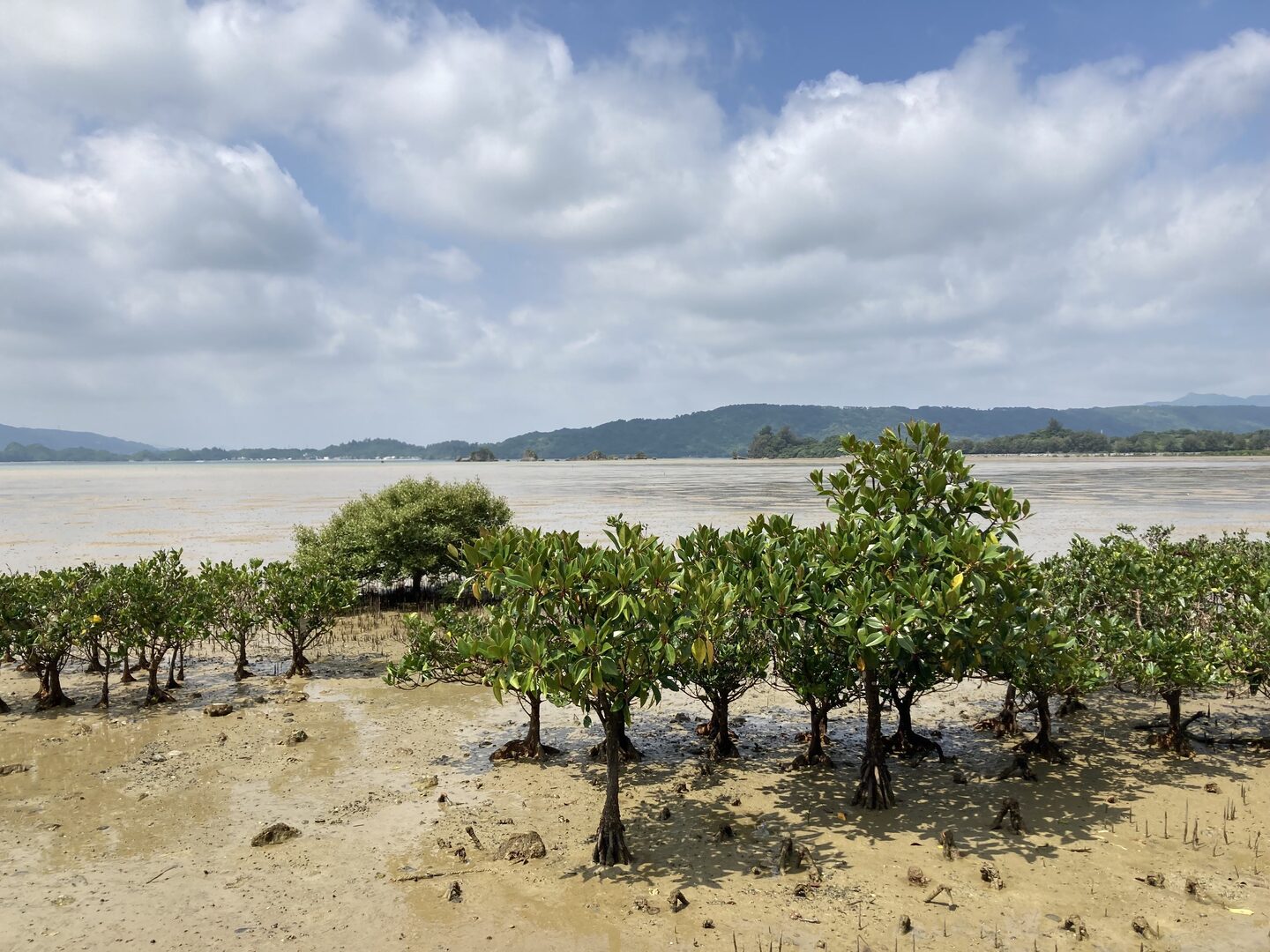
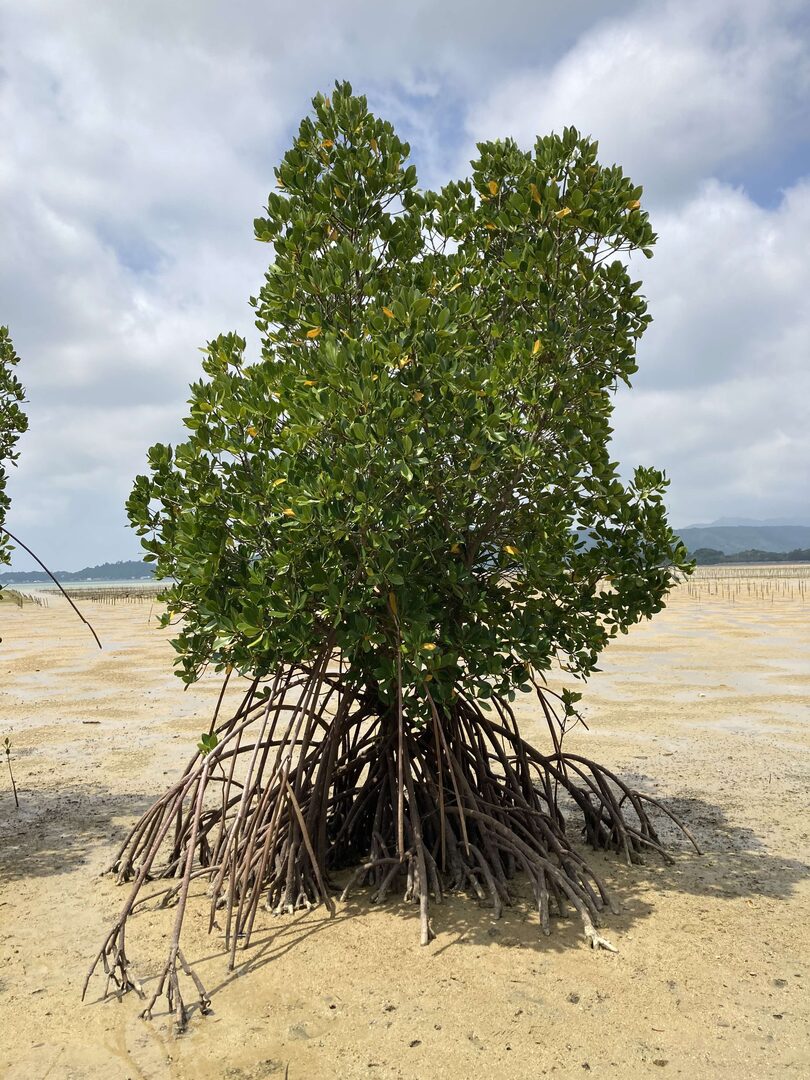
4. Publications
4.1 Journals
Published
Armitage DW (accepted; in press) To remain modern, the coexistence programme requires modern statistical rigour. Nature. (bioRxiv preprint)
Terry, JCD, Armitage DW (2024) Widespread analytical pitfalls in empirical coexistence studies and a checklist for improving their statistical robustness. Methods in Ecology and Evolution. Open access link
Ross SRP-J, Friedman NR, Dudley KL, Yoshita T, Yoshimura M, Economo EP, Armitage DW, Donohue I (2024) Divergent ecological responses to typhoon disturbance revealed via landscape-scale acoustic monitoring. Global Change Biology 31:e17067. Open access link
Preprints
Nakagawa S, Armitage DW, Froese T, Yang Y, Lagisz M. (in review) Poor hypotheses and research waste in biology: learning from a theory crisis in psychology. preprint
Miryeganeh M, Armitage DW (in revision) Epigenetic responses of trees to environmental stress in the context of climate change. Draft available on request.
Dong T, Lin Y, Yang YQ, Lu SY, Wang L, Li DF, Zhong ND, Huang QX, Donald ML, Armitage DW, Wang Q. (in review) Warming driven shifts in floral traits cause female-biased functional mismatch in a bumblebee-pollinated plant. Draft available on request.
Zhu Z, Yuan M-Z, Armitage DW, Ma C-S (in revision) Responses of a widespread pest insect to extreme high temperatures are stage-specific and divergent among seasonal cohorts. Draft available on request.
Other papers by unit members
Hasegawa N*, Techer MA*, (20 coauthors), Rasmussen DA*, and Mikheyev AS* (2023) Evolutionarily diverse origins of deformed wing viruses in western honey bees. PNAS 120: e2301258120.
Ross SRP-J, O'Connell DP, Deichmann JL, Desjonqueres C, Gasc A, Phillips JN, Sethi SS, and Burivalova Z.(2023) Passive acoustic monitoring provies a fresh perspective on fundamental ecological questions. Functional Ecology 37: 959-975.
4.2 Books and other one-time publications
Nothing to report
4.3 Oral and Poster Presentations (including outreach events)
- Dave Armitage, oral presentation, Annual Meeting of the Ecological Society of America, 2023
- Dave Armitage, oral presentation, Annual Meeting of the Ecological Society of Japan 2024
- Dave Armitage, Miyadi Award Lecture (invited), Annual Meeting of the Ecological Society of Japan 2024
- Dave Armitage, invited presentation, OIST x RIKEN ITHEMS Life and Space Symposium 2024
- Dave Armitage, invited presentation, OIST x Tohoku Univeresity Marine Science Symposium 2023
- Dave Armitage, invited lecture, International Carnivorous Plant Society Annual Meeting, 2023
- Nonno Hasegawa, poster, Annual meeting of the Ecological Society of Japan 2024
- Nonno Hasegawa, invited outreach talk, Odawara High School
- Nonno Hasegawa, invited seminar, Oita Prefectural Association for the Promotion of Nectar and Pollen Source Plants 2024.
5. Intellectual Property Rights and Other Specific Achievements
External funding by unit members:
- JST Africa-Japan Collaborative Research (PI Armitage, FY 2024-2027)
- JSPS Postdoctoral Research fellowship (Dr. Su'ad Yoon, FY2022-2024)
- JSPS Grant-in-Aid for Early-Career Scientists (PI Armitage, FY 2022-2024)
- Joint Genome Institute Community Science Program (Dr. Su'ad Yoon, FY2022-2024)
- JSPS DC1 Graduate Research fellowship (Nonno Hasegawa, FY2022-2024)
- Joint Genome Institute Community Science Program (Dr. Su'ad Yoon, FY2022-2024)
- JSPS Grant-in-Aid for Early-Career Scientists (PI Miryeganeh, FY 2023-2025)
- JST FOREST (PI Miryeganeh, FY 2023-ongoing)
6. Teaching
- David Armitage taught a semester-long course in Fundamentals of Ecology
7. Visitors and events
- Prof. Andrew Letten (University of Queensland)
- Dr. Becky Heath (University of Cambridge)
- Prof. Mollie Brooks (National Institute of Aquatic Resources Denmark)
- Prof. Masato Yamamichi (National Institute of Genetics Japan)
- Prof. Po-an Lin (National Taiwan University)
- Prof. Rebecca Ostertag (University of Hawaii Hilo)
8. Other
- Miyadi Award (early career prize awarded by the Ecological Society of Japan) to Dave Armitage



